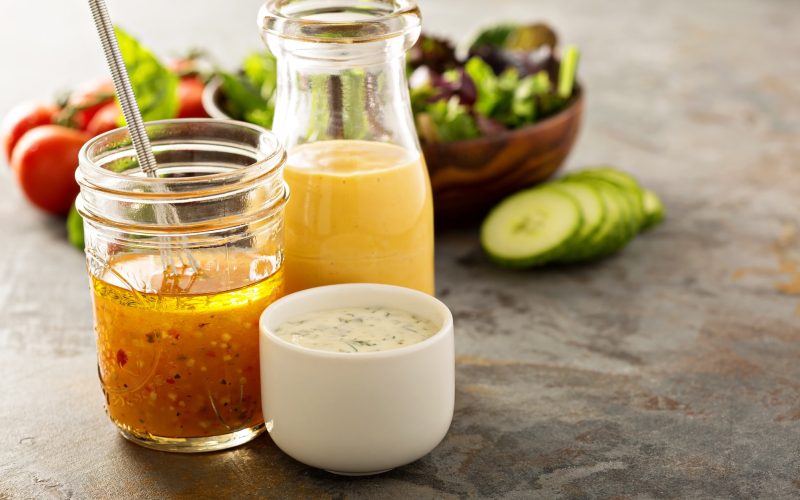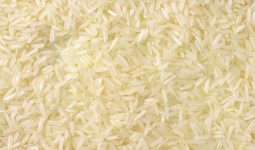Before we dive into the world of Italian dressing, let’s first understand what you’re counting when you’re counting calories.
What are Calories?
A calorie is a unit of energy. In the context of nutrition, calories refer to the amount of energy that food and drinks provide when consumed.
When you consume more calories than your body needs, it stores the excess as body fat.
Conversely, if you consume fewer calories than your body needs, it burns stored fat to make up the difference.
That’s the basic principle behind weight loss and weight gain.
| Food Item | Calorie Count |
|---|---|
| 1g of Carbohydrates | 4 calories |
| 1g of Protein | 4 calories |
| 1g of Fat | 9 calories |
| 1g of Alcohol | 7 calories |
How Calories Impact Your Health
Your calorie intake plays a crucial role in your overall health and well-being.
Consuming an appropriate number of calories for your age, sex, weight, and activity level helps you maintain a healthy weight.
Regularly consuming too many calories can lead to weight gain and health problems like heart disease, diabetes, and certain types of cancer.
On the other hand, consuming too few calories can lead to weight loss, nutrient deficiencies, and other health issues.
The key is to balance the number of calories you consume with the number of calories your body uses or “burns off.”
Understanding how many calories are in the foods and beverages you consume helps you monitor your energy intake.
This knowledge can guide you in making healthier choices – such as choosing to dress your salad with a lighter option if you’re interested in reducing your calorie intake.
Now that you understand what calories are and how they affect your health, we can explore the caloric content of Italian dressing.
Stay tuned to discover more about how many calories are in Italian dressing and how to enjoy its flavor without overindulging.
Links like how many calories in black coffee, how many calories in fries, and how many calories in pizza can also help you in your calorie counting journey.
Italian Dressing: A Calorie Perspective
When it comes to salads, Italian dressing is a popular choice due to its zesty flavor and versatility.
But when you’re counting calories, you might be wondering, “How many calories are in Italian dressing?”
Let’s take a closer look at what makes up this flavorful condiment and how it affects your calorie count.
Understanding the Ingredients of Italian Dressing
Italian dressing primarily consists of a blend of vinegar, water, vegetable oil, chopped bell peppers, sugar, and a myriad of herbs and spices.
These ingredients come together to give Italian dressing its characteristic tangy, slightly sweet, and herby flavor.
It’s important to note that the calorie content can vary depending on the type and quantity of these ingredients.
For instance, the addition of sugar or high-calorie oils can increase the overall calorie count of the dressing.
On the other hand, opting for low-calorie oils or substituting sugar with low-calorie sweeteners can reduce the calorie content.
Unveiling the Calorie Count in Italian Dressing
Typically, a tablespoon of Italian dressing can contain anywhere from 15 to 45 calories.
The variance in calories can be attributed to the ingredients used and the proportion of oil to vinegar.
Here’s a general snapshot of how the calorie count can vary:
| Type of Italian Dressing | Calories per Tablespoon |
|---|---|
| Regular | 35-45 |
| Low Fat | 15-25 |
| Fat Free | 10-15 |
While Italian dressing might be higher in calories compared to other dressings like vinaigrettes, it’s worth remembering that the nutritional value of your salad doesn’t just depend on the dressing alone.
The type of greens, vegetables, and additional toppings you choose also play a crucial role in the overall calorie count of your meal.
Remember, understanding the calorie content of foods is a key part of managing your diet effectively.
If you’re keen on learning more about the calorie content of other foods, feel free to explore our articles on topics such as how many calories in fried chicken or how many calories in pizza.
With the right knowledge and some mindful choices, you can savor the flavor of your favorite foods without any regret. Happy eating!
Factors Affecting Calorie Count
Understanding what drives the calorie count in your food can help you make more informed decisions about your diet.
When it comes to Italian dressing, there are a couple of major factors that can affect how many calories it contains.
Serving Size Matters
The first factor, and perhaps the most obvious, is serving size.
The number of calories listed on a nutrition label refers to one serving, but what constitutes a serving can vary from product to product.
As a rule of thumb, one serving of Italian dressing is typically two tablespoons.
However, if you’re not measuring out your dressing, it’s easy to pour more than you think.
As a result, you could end up consuming more calories than you planned.
For example, if you use four tablespoons of dressing, you’re actually consuming two servings, which means twice the calories.
Here’s a quick breakdown of how calories can add up with Italian dressing:
| Serving Size | Calories |
|---|---|
| 1 tablespoon | 30 |
| 2 tablespoons (1 serving) | 60 |
| 4 tablespoons (2 servings) | 120 |
The Role of Ingredients
The second major factor that can influence the calorie count in Italian dressing is the ingredients used.
A basic Italian dressing includes vinegar, water, and a variety of seasonings, which add negligible calories.
The real calorie contributor is the oil, typically olive oil or canola oil.
Here’s a rough estimate of how many calories these ingredients add to Italian dressing:
| Ingredient | Calories per tablespoon |
|---|---|
| Vinegar | 3 |
| Water | 0 |
| Seasonings | 5-10 |
| Olive oil | 119 |
| Canola oil | 124 |
Keep in mind these are estimated values, and the actual calorie count can vary based on the specific brands and quantities used.
Remember, understanding these factors can help you control your calorie intake more effectively.
So next time you’re wondering, “How many calories in Italian dressing?” remember to consider both the serving size and the ingredients.
For more details on calorie counting and its significance, don’t hesitate to check out our guide on what is calorie counting.
A Deeper Look at Italian Dressing
When you’re counting calories and striving to maintain a healthy diet, it’s important to consider not only what you eat but also how it’s prepared.
Let’s delve deeper into the world of Italian dressing and understand the differences in calorie content based on how it’s prepared and what ingredients are used.
How Homemade and Store-Bought Differ
A significant factor in determining how many calories in Italian dressing is whether it’s homemade or store-bought.
Store-bought dressings often contain added sugars and preservatives, which can increase the calorie count.
On the other hand, making Italian dressing at home gives you control over the ingredients.
You can choose to use less oil / less sugar or incorporate healthier alternatives, which can significantly lower the calorie content.
Let’s compare the calorie content in a standard serving size of 2 tablespoons:
| Dressing Type | Calories |
|---|---|
| Homemade Italian Dressing | 80 |
| Store-Bought Italian Dressing | 140 |
As you can see, homemade dressing can be a lower-calorie option.
However, it’s essential to remember that the actual calorie count can vary based on the specific ingredients you use.
The Impact of ‘Light’ or ‘Fat-Free’ Options
In your quest to find out how many calories in Italian dressing, you might be drawn to “light” or “fat-free” versions available in stores.
While these options often advertise fewer calories, it’s crucial to read the nutritional information carefully.
“Light” or “fat-free” versions often compensate for the reduced fat by adding additional sugars or artificial flavors, which can negatively impact your health.
For instance, a regular Italian dressing might have 140 calories with 15g of fat, while a “light” version might have 50 calories but contain 10g of added sugars.
| Dressing Type | Calories | Fat | Added Sugars |
|---|---|---|---|
| Regular Italian Dressing | 140 | 15g | 0g |
| Light Italian Dressing | 50 | 0g | 10g |
In conclusion, the key to managing your calorie intake is not just about choosing “light” or “fat-free” options but understanding the nutritional content of what you’re eating.
Making informed choices is the first step towards a healthier lifestyle.
Don’t forget to check out our other guides on how many calories in french fries or how many calories in a slice of pizza for more insights into your favorite foods.
Smart Choices for Calorie Counters
When you’re counting calories, it’s essential to make smart choices that allow you to enjoy your favorite foods without going over your daily calorie limit.
This holds true when it comes to enjoying Italian dressing. Below are some tips and alternatives that can help you savor the flavor without regret.
Portion Control Tips
Portion control is one of the most effective ways to manage your calorie intake.
Here are some tips to keep those sneaky calories in check when it comes to Italian dressing:
- Use a measuring spoon: It’s easy to overload your salad with dressing, and those calories can quickly add up. By using a measuring spoon, you can ensure that you’re only using the recommended serving size.
- Dress your salad lightly: Instead of dousing your salad in dressing, try drizzling a small amount over the top. This way, you’ll get the flavor without all the extra calories.
- Dip, don’t pour: Another smart option is to put your dressing on the side and dip your fork into it before each bite. You’ll still get the taste of the dressing, but you’ll use a lot less.
Healthier Alternatives and Substitutions
If you’re wondering how to enjoy your Italian dressing while keeping the calorie count low, consider these healthier alternatives and substitutions:
- Choose light or reduced-fat options: Many brands offer light or reduced-fat versions of their Italian dressing. These options typically have fewer calories than the regular versions.
- Opt for vinaigrettes: Vinaigrettes are generally lower in calories than creamy dressings. An Italian vinaigrette can give you the flavor you love with fewer calories.
- Make substitutions: If you’re making your own dressing, consider substituting some of the higher-calorie ingredients. For example, you could use less oil and add more vinegar or lemon juice.
Making Your Own Low-Calorie Italian Dressing
Making your own Italian dressing can be a great way to control what goes into it and, by extension, control the calories.
Here’s a simple low-calorie Italian dressing recipe:
- 1/4 cup of vinegar or lemon juice
- 2 tablespoons of extra virgin olive oil
- 1 teaspoon of honey or another low-calorie sweetener
- A generous sprinkle of Italian seasoning
- Salt and pepper to taste
Combine all the ingredients in a jar and shake well before using.
Remember, whether you’re trying to figure out how many calories in Italian dressing or any other food item, the key is to balance enjoyment with moderation.
Happy calorie counting!








